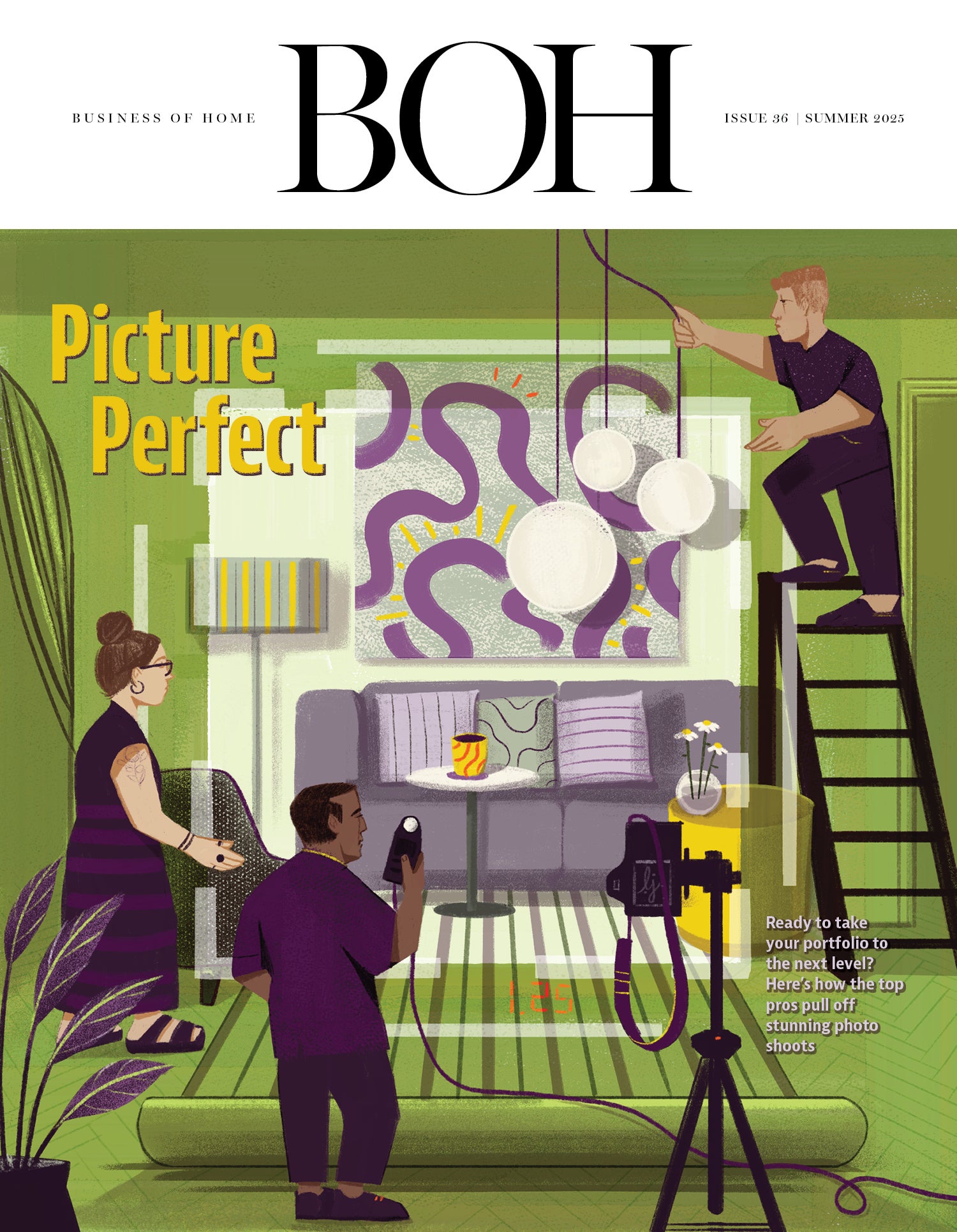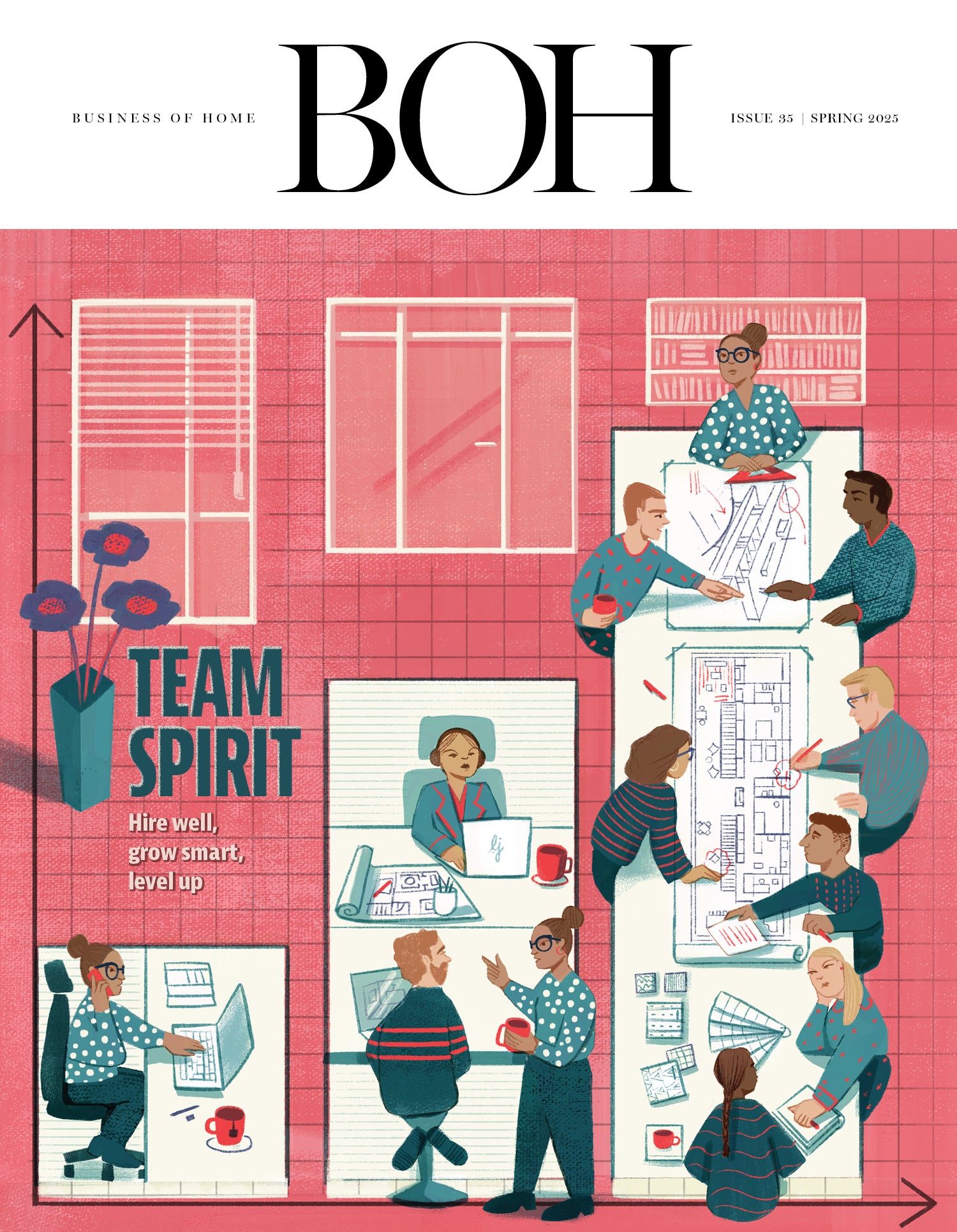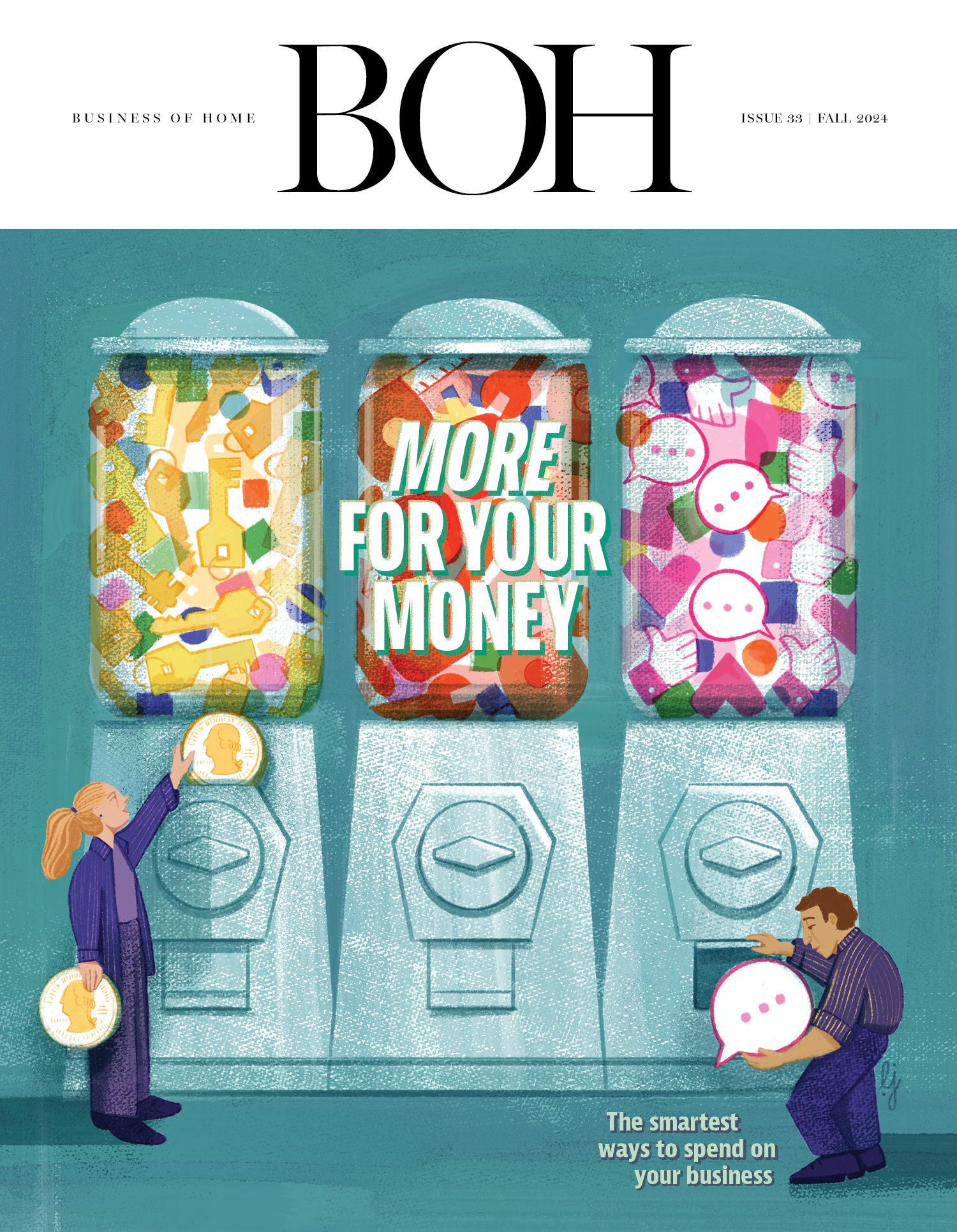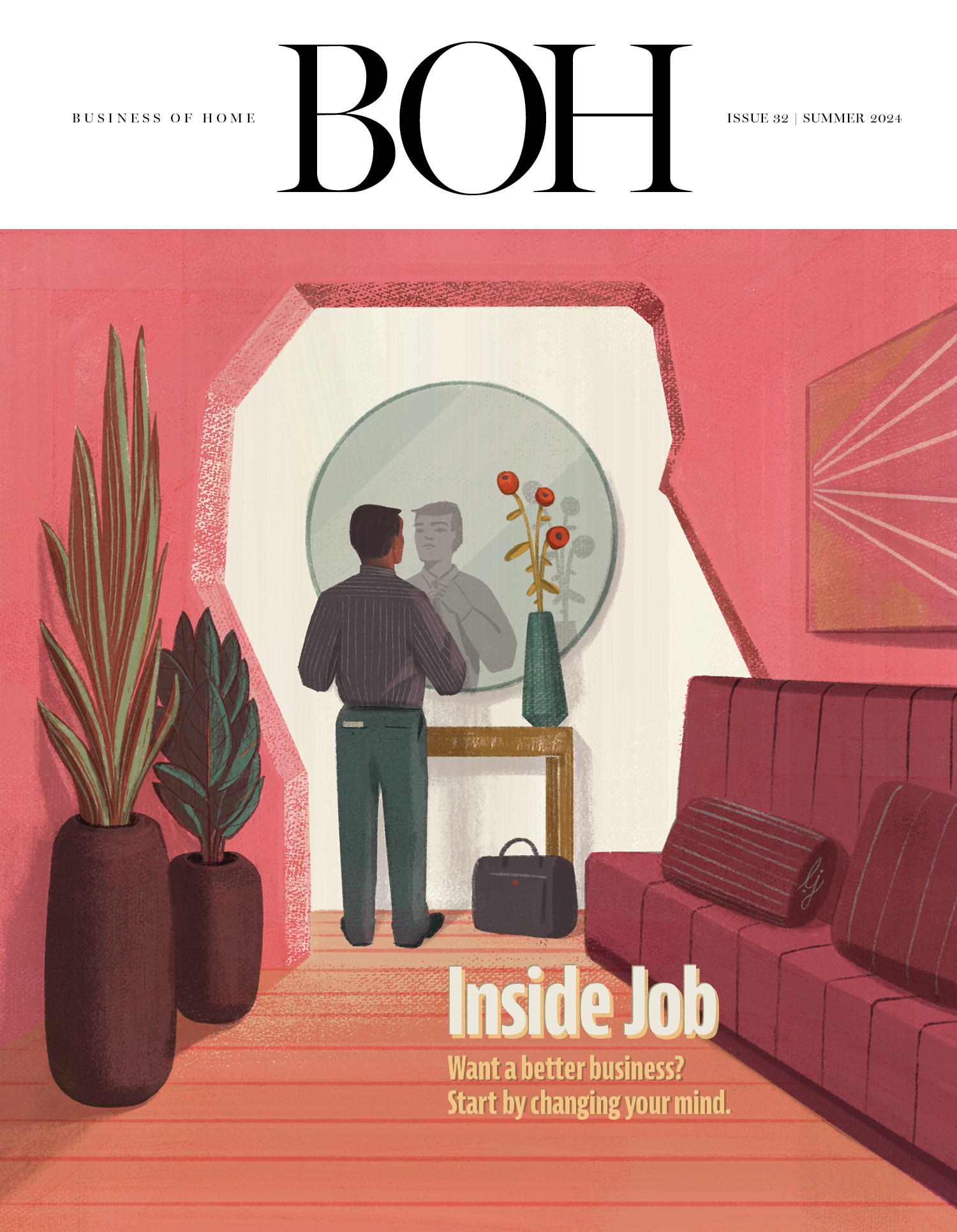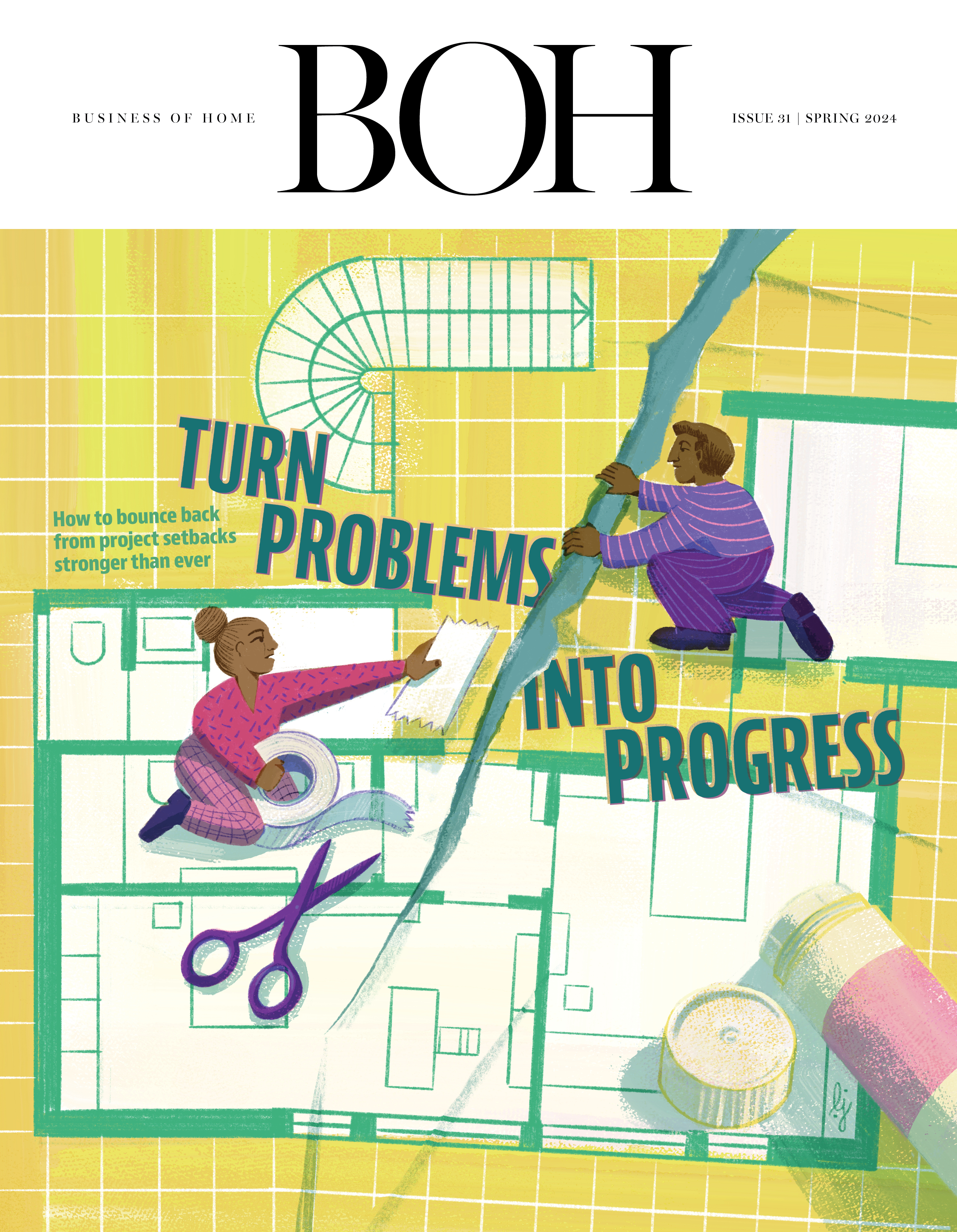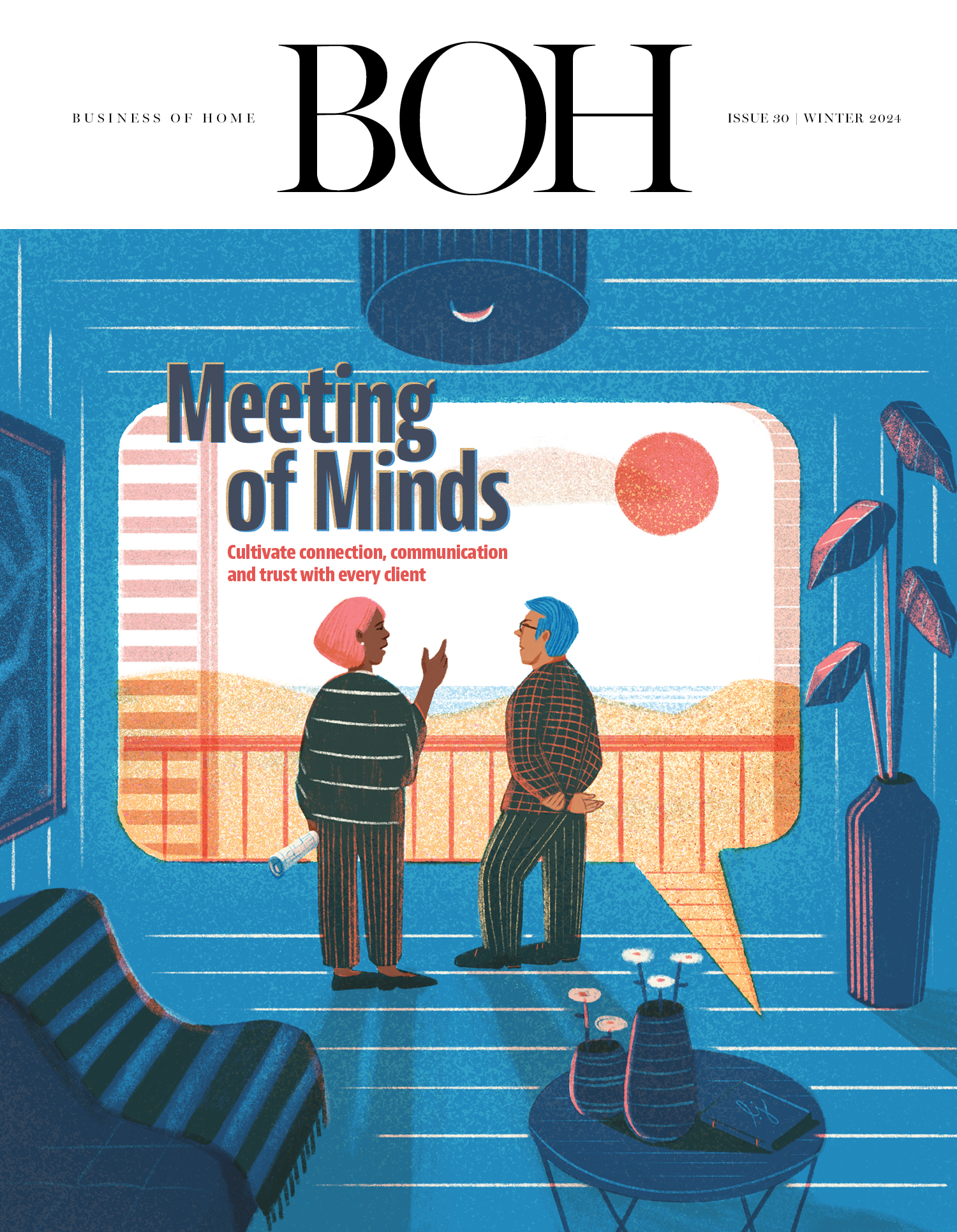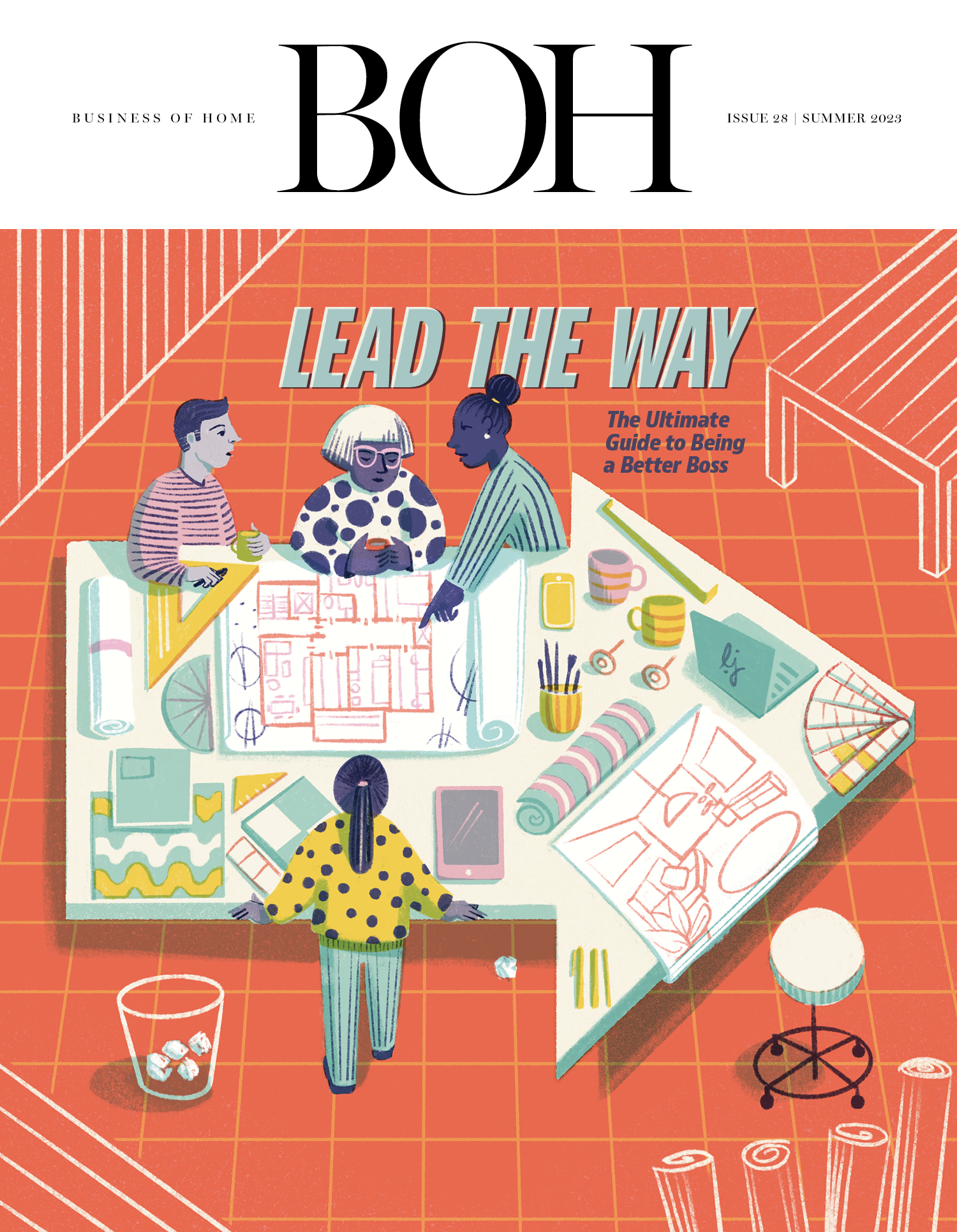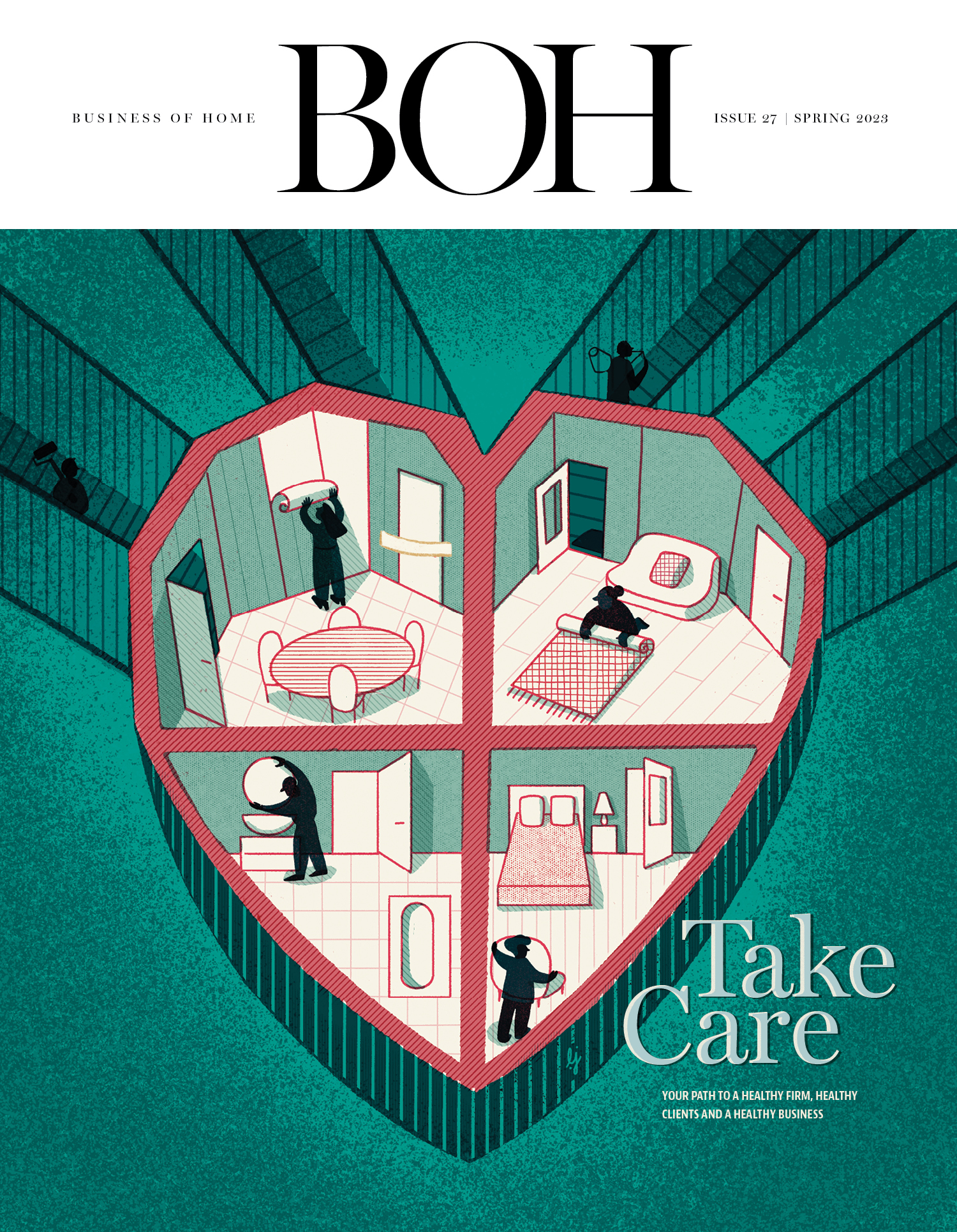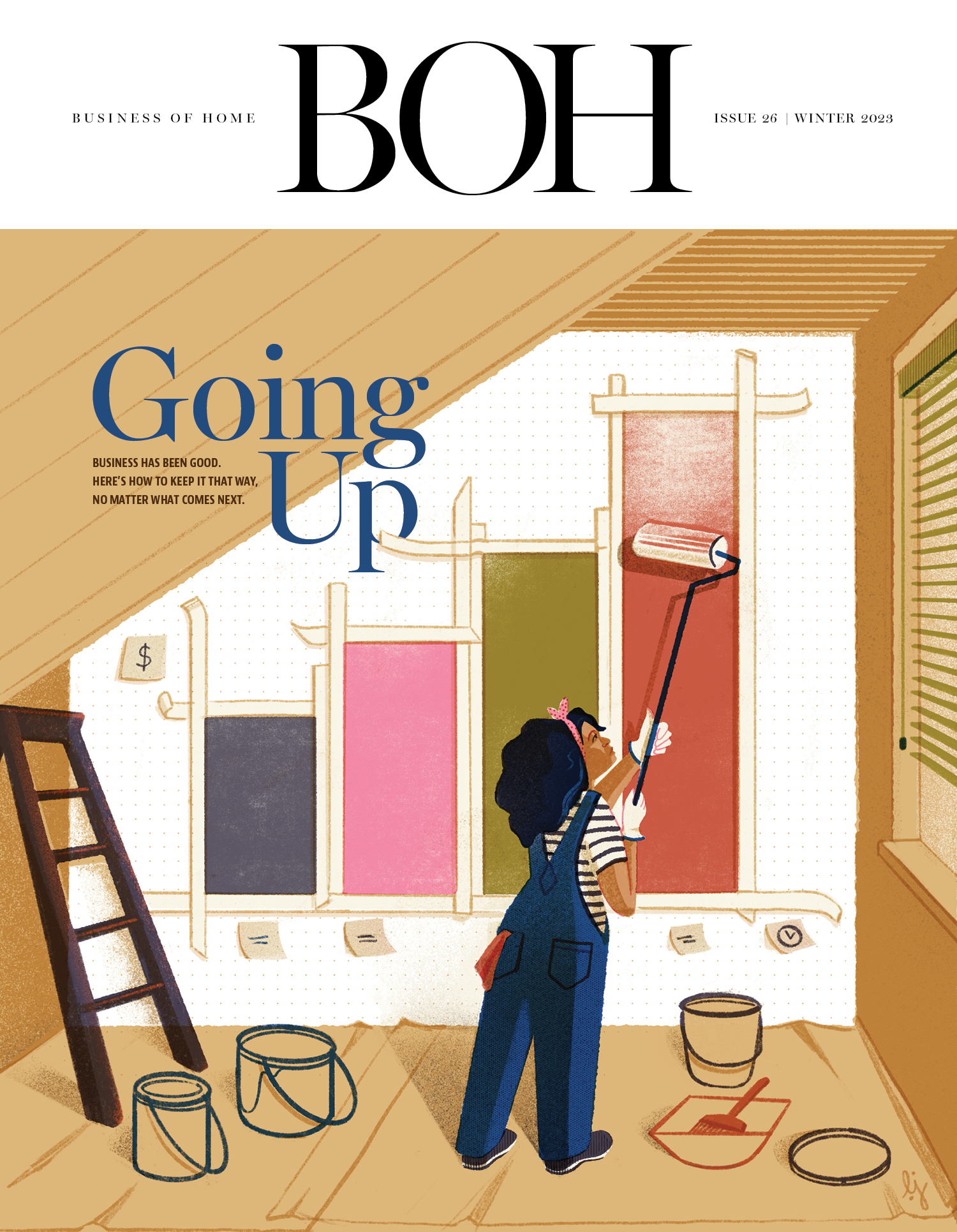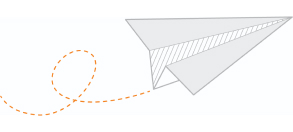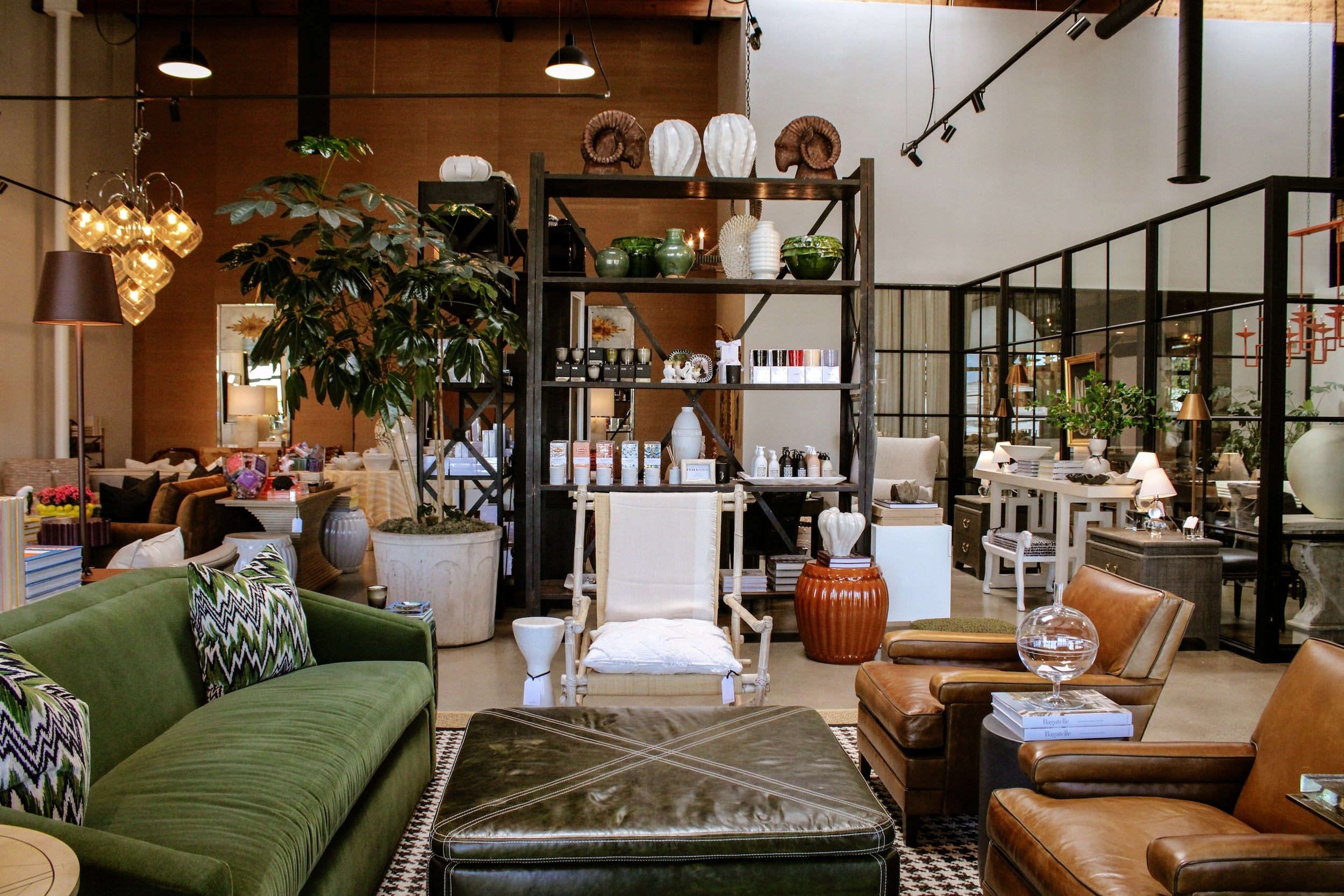In Business of Home’s series Shop Talk, we chat with owners of home furnishings stores across the country to hear about their hard-won lessons and challenges, big and small. This week, we spoke with Joelle Nesen, the Portland, Oregon–based president and lead designer of Maison Inc. and the Shop at Maison.
Though the Portland of recent decades has a rep as a bit of a hippie (or hipster) haven, Nesen has seen the city through more iterations than that as a fourth-generation Portlander. Her paternal great-great grandfather opened a motorcycle shop there in 1905, which her grandfather, and then father, ran as a bicycle shop. It took Nesen a lot longer to get into retail; though she launched her own design firm in 2001, she didn’t open its accompanying showroom until 2019. Ahead, she discusses what finally gave her the push, the aspect of her business that provokes chest pains and her vision for building out a design district in Portland.
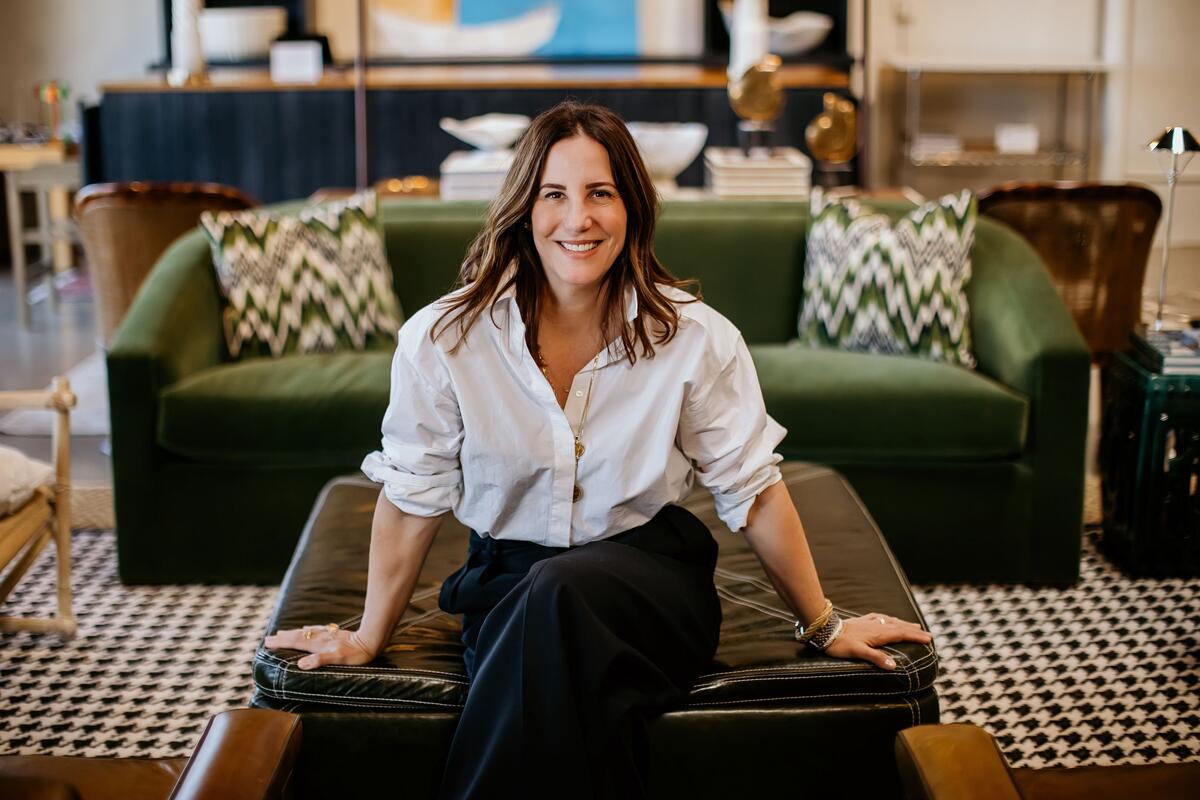
What was your career like before the shop?
I had been an interior designer since the late 1980s, working for various people; then, in 2001, I opened Maison Inc. as primarily a design firm. We envisioned having a very tiny showroom, and [our first one] was an 800-square-foot spot with a few static upholstered pieces. We rotated some art and worked that way for four or five years. We moved to a second location, which was probably three and a half times the size, and started to have a nice collection of custom upholstery, as well as more art. It gave me a spot for my constant shopping at auctions and antiques shows. We’d have events and parties, but [the retail side] was never a consistent player.
As the design firm continued to grow, I ended up buying a 5,000-square-foot space we fondly called the woodshed. It was an unheated, unplanned, unplumbed concrete structure that held this guy’s wood collection. It is in a kind of crusty, industrial part of town, on a dirt road. I don’t know, it spoke to me! It would probably speak to everyone else as a mistake. For me and my design team, we thought it could be amazing. In less than four months, we did all the infrastructure, all hands on deck—we scrubbed the floors, added a mezzanine, my husband and I vacuumed the entire ceiling at 26 feet up before the painters came. It came to life in 2019, so we had a year before Covid to lay out this really huge showroom. I hired a showroom manager, Ryan, and we could keep going through Covid because we had a lot of space: We were able to stay away from each other, and it gave us an opportunity to think about what fine tuning we wanted to do.
It dawned on me that in Portland, it was so hard as a designer to find a place where I could load up my car with a ton of accessories, stage a client’s house after a job and then easily return what I didn’t need. So we started talking more about that: Let’s make it easy for other designers. We should be catering to our crew. How do we let them know we’re there for them? You call and say: “I want every white vase you have,” and we’ll pull them for you, have them ready to go, help you load your car, and I don’t even need a credit card [on file]. Just bring back what doesn’t work.” And it blossomed for us.
I was going to ask why you wanted to go into retail 18 years after starting your firm, but it sounds like the timeline was really organic.
It was! I never really envisioned retail. In the very early inception of Maison, I always felt like I wanted to have a little showroom area just so you could sit on and touch something and it could be a micro expression of Maison. As the design firm got bigger and bigger, the showroom followed suit. Each time, it was a learning curve. Obviously interior design takes so much focus, and I never really felt ready to dive in [to a retail project]. The spark wasn’t there. I hadn’t learned that we needed more small, buyable things: candles and notepads and beautiful napkins, and unusual things that you didn’t see everywhere. It hadn’t occurred to me because when we were shopping at trade shows, we were shopping for furniture.
Is it to the trade only? Who are your usual customers?
It’s open to everyone. We get a lot of “ladies who lunch” and come in to shop for girlfriend and hostess gifts. We’ve got people who want to buy furniture and don’t want to hire a designer, but are looking for a little help when buying a Lee sectional. When the trade comes in, we have that mezzanine, and [my team member] Lisa is up there and runs the whole trade department. Designers will come in, and she’ll help them place orders. We can operate both ways, which is unusual because typically trade showrooms are so isolated and the public doesn’t go in, and they tend to be very static. We turn our stuff over more regularly.
How would you describe the aesthetic of the store?
I wanted the feeling of the building to remain, which was this giant slab of concrete. We ordered Pinkys steel-framed doors from L.A. and built a deck across the front so it feels very industrial, then we did beautiful black fabric awnings with arrows and these great old Paul Ferrante lanterns. When you come in, it’s a concrete floor and white walls and a black ceiling, with warehouse lights and grasscloth walls. It’s very airy. We’ve created six or seven vignettes on the main floor, and we go through phases; sometimes it’s seagrass and white furniture, but right now we’ve got a terra cotta pink sofa and a green sectional. We’ve always got coffee tables piled with interesting books and candlesticks. We carry Montes Doggett, a beautiful kitchenware line from Peru. Ryan and I have a secret tabletop obsession, which we can’t seem to satisfy.
You mentioned a few of the vendors that you work with, but can you tell me about a favorite vendor or vendor relationship?
Lee Furniture from North Carolina, for a couple of reasons. My rep is great, and my rep’s wife is the Palecek rep! It is so rare that the president of a furniture company is accessible, and the president of Lee, Russell Towner, is accessible and charming and funny and generous, and he makes it so fun to be a Lee partner.
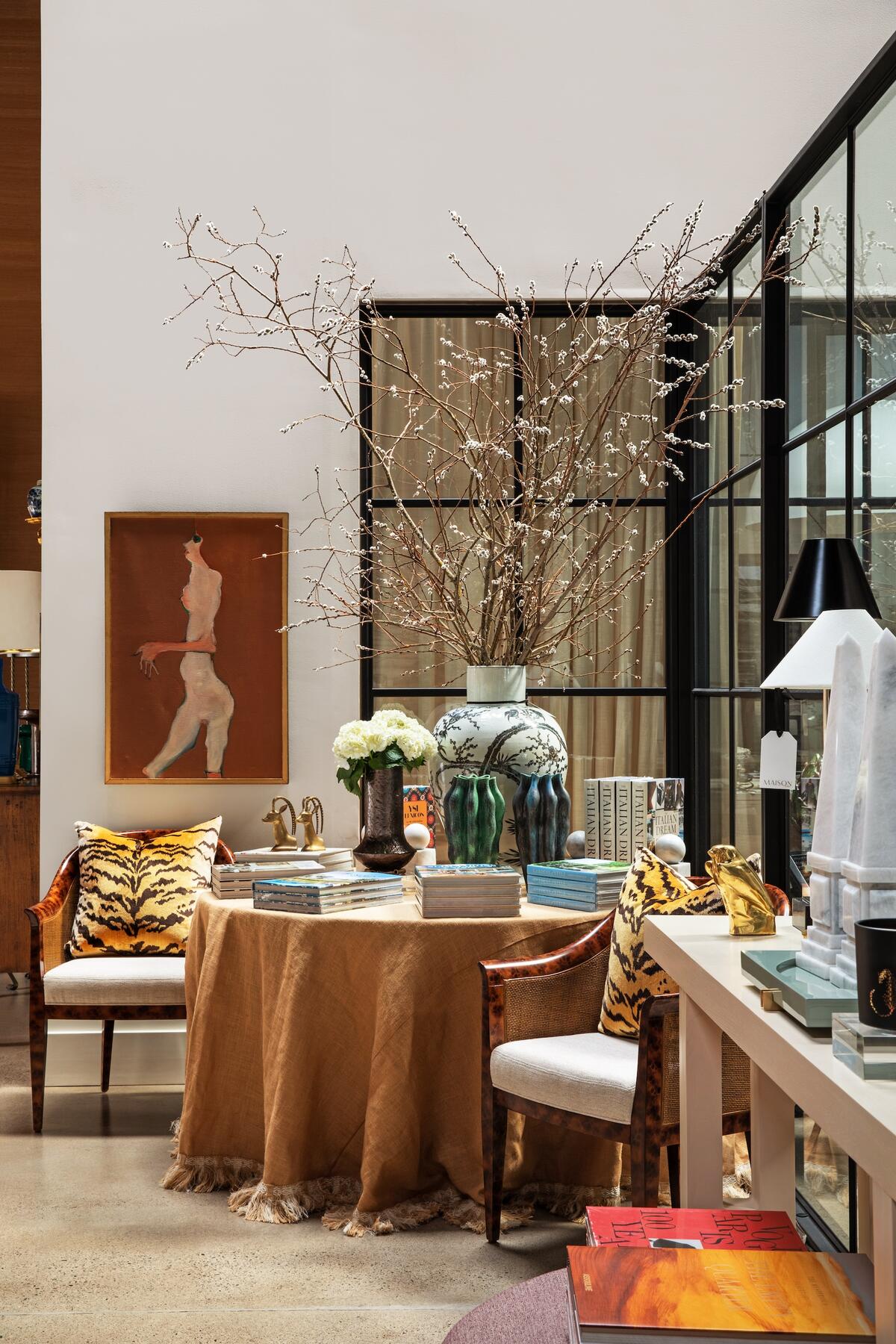
What’s a product or category that flies out the door for you?
We have a couple of new candle lines, including a custom candle. Our Montes Doggett tabletop flies because they have such cool shapes and it’s a great price point for how cool it is. Black Ink is the company that does these really fun monogram notepads in Lucite boxes. Every single client of mine and every house I go to has one of those in it.
What about your own favorite item or category?
Eichholtz accessories, especially the Metropolitan Museum of Art line they did last year with marble gargoyles and candlesticks. They look really expensive, like museum quality. I have been obsessed with those, but I just have no tabletop space left in my home. I’m constantly eyeballing, thinking, Where can I put these marble gargoyles? Everyone needs a marble gargoyle.
What is your approach to sourcing?
It’s almost completely [accomplished] between High Point and Atlanta. We sit-test and evaluate all upholstery at High Point. We also antique shop in High Point and look for special finds, and then it’s Atlanta for more accessories. Scott Antique Markets in Atlanta, that’s a big one for us. When they have antiques during the show in January, we buy a lot of stuff. And Ryan and I are constantly talking about an estate sale, or the local auction houses. We want to have a good collection of things that you’ve never seen anywhere else.
What are your feelings on e-commerce?
It sort of gives me chest pains. Last year was our real big push on e-commerce, and it’s just a beastly thing—to learn all the search engine optimization things and how much to push it on Instagram versus on your website. We hired a gal who used to work with Showers Pass and she’s been really working on growing the eyes on us and our sales, and it’s been good. It’s such a learning curve. How much can we ship every day? What kind of people will buy furniture, what kind of people will just buy candles? We do sell, surprisingly, a good amount of big stuff—furniture and mirrors—online, but it requires so many specialists in all these different zones. I’m ultimately just an interior designer. But now I am the president of a company that does all these different things, trying to balance so many different humans who aren’t my normal, billable humans who I know how to manage. There are so many people! That is probably my biggest stressor: e-commerce and building that while making sure we’re talking to the trade and planning events. It’s a lot sometimes.
Tell me more about your events.
In the very beginning, we were so large in scale that reps would come in for, say, a fabric line, and they would say, “Would you let me do a showing here and invite other designers?” It started with little things like that. Then, we sell a lot of books. I would see Alexa Hampton at all the different markets and we always talked, so I just DMed her out of the blue in 2022 and said, “Would you ever come to Portland and do a book signing?” She didn’t even have a new book out, but I figured she’s such a seller that it wouldn’t matter. She said, “Oh my God, totally.” I figured she was going to tell me it cost $20,000 or something, but she just had me pay for her travel and accommodations. Done! She came out and we presold 75 books that were barely in print anymore. It was Cinco de Mayo, we had 100 people, and we did margaritas and great food. It was such a fun time.
That kicked it off. Then we had Hutton Wilkinson the next year, then Alexa again, and now we’ve been courting David Netto. We’ve got a few things up our sleeves for this year.
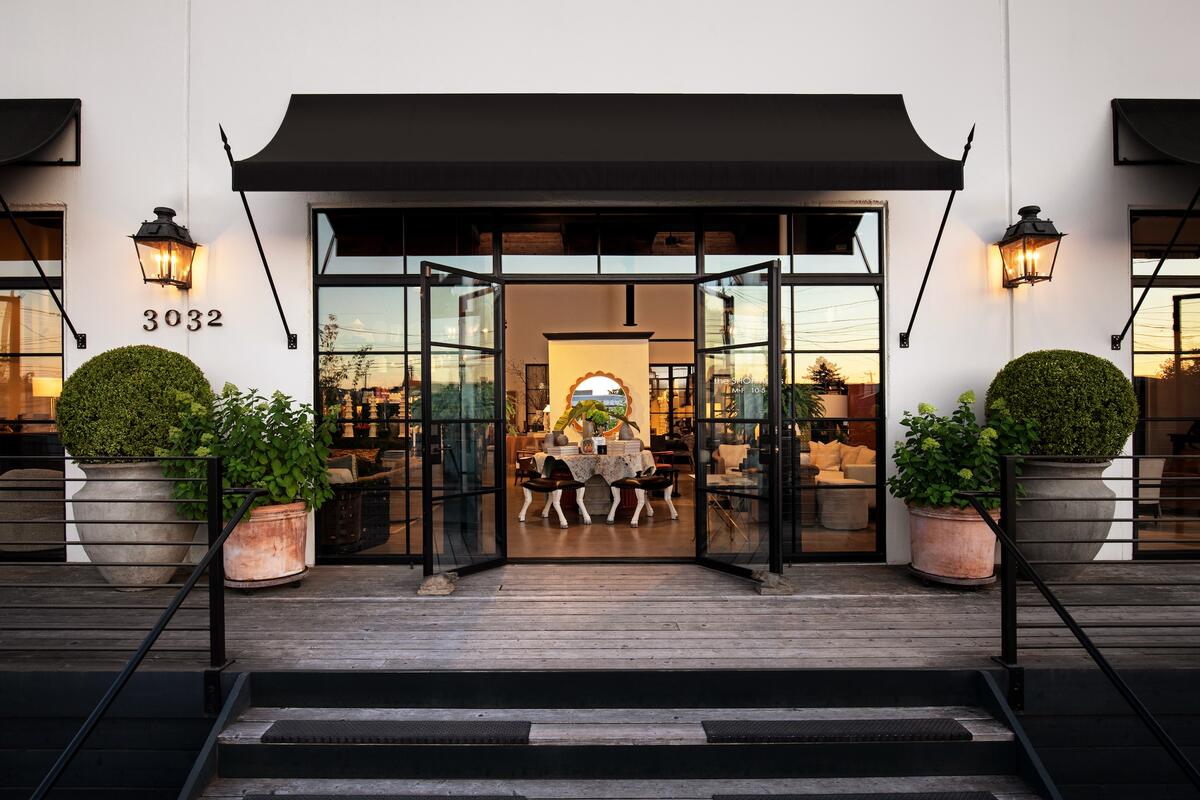
What’s the Portland design scene like, generally?
It’s impressive, considering that we don’t have a classic design center here. There are a few showrooms and some retail, a great art scene here that’s always been really popular, but it’s hard to get designers to come out. You’ve got to put on a good party to entice people. People in Portland have made great efforts to put on good parties. There are a couple of different design events: Swatched, and we did something called Design Dash where we put design teams together—like us and Ann Sacks and Kravet—and put together a collage of all these wallpapers. It just gets people meeting and networking. I think that has really been helpful. We talk to the other showrooms about how we can partner to keep people excited about design in Portland.
The shop is fairly young, but do you have some hopes for the future of your retail business?
First would be continuing to build on what we’ve created and improving on every facet of it. I want to be delivering the best possible product to the retail public and the best possible product and service on the design side. I want every designer to go, “Oh my God, call Joelle. Call Maison. They’ll help.”
I bought the building across the street from me, which we fondly call “the Eyebrow” because it’s a very skinny, long weird building. I’ve been stuck in permitting forever, but I’ve been talking with somebody in the outdoor furniture realm, and my vision is to have it as a little outpost showroom here. I want somebody in gardening and pottery and flowers. I want a design-centric area! There are steelworkers next to me who are amazing. There’s a wood shop down the street, a finisher around the corner. We’re surrounded by blue-collar factories, and I love that. We’re selling luxury goods, but we’re also really chill ladies. We love being out on the street with everybody. I want an entertaining outdoor space with big pots and plants, because it’s such an arm of what we do as designers: “What should I put on my porch?” Or “I need a tree.” And maybe there’s an espresso bar, or just a bar. You come to a design district, get everything you need and have a cocktail.
Sounds amazing. What’s your favorite day at the shop?
I love a day when I have an early meeting with the design staff. We lay out the week and we have an agenda. We know who’s doing what. I check in with Ryan and see the plans coming together for events. I see people coming into the showroom and shopping. I say hi to the designers who are going upstairs to talk to Lisa. And I’m doing my thing that I love, which is the creative work. Every day when I drive up and every day when I leave, I’m so proud of the space and I’m so proud of all the people who work in it, because it takes a team of talented people to do all these things. Obviously they all get paid, but I think they love Maison and what Maison is about, which hopefully, on most days, makes work fun. Not all days—it can be stressful and there are tariffs and shipping [issues] and whatever—but it’s still so fun.




